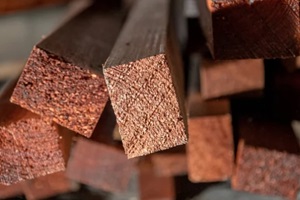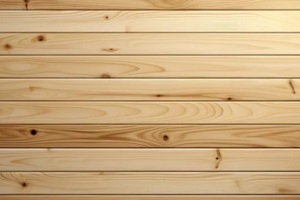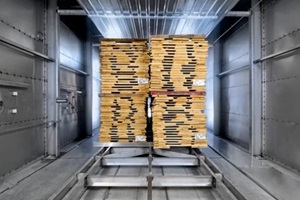 Wood that is pressure-treated with preservative and pest resistant chemicals is a common building material. While it may be used in many areas of a structure, building codes require its use for some applications.
Wood that is pressure-treated with preservative and pest resistant chemicals is a common building material. While it may be used in many areas of a structure, building codes require its use for some applications.
It is important that architects, engineers and construction companies know their local building codes and regulations related to the use of preservative-treated wood in construction projects.
What Is Pressure Treated Wood?
“Pressure treated” lumber is often understood to mean the green-hued wood that’s rot resistant. And while that green-hued lumber has been pressure treated, “pressure treated” actually describes the process for getting chemicals into wood.
Pressure treated does not exclusively describe wood treated with rot resistant chemicals. The chemicals used could be for rot and pest resistance OR for fire retardancy and smoke reduction.
During the process of pressure treating, wood is placed in a specialized cylinder called a retort that creates a powerful vacuum. This vacuum extracts moisture from the wood cells leaving empty space. As the retort is re-pressurized, the preservative/pesticide chemical is released into the cylinder and forced into the now unoccupied spaces throughout the wood.
When the pressure process is complete, the wood is removed from the cylinder and either left wet or moved to a kiln to undergo a controlled drying process.
“Wet” preservative treated lumber is commonly available as it’s used for outdoor projects like decks, fences, gazebos, and landscaping. Kiln dried after treatment (KDAT) wood should be used for any indoor, enclosed space where preservative treated lumber will be used.
Each piece of treated material will display a stamp or label indicating the originating mill, how and where it was treated, and for what application it is rated. Reviewing the information on the stamp and label before the material is purchased and installed helps ensure that the right treated material is used.
Chemicals Used for Rot- and Pest Resistance
The most commonly used rot resistant chemicals used in residential building applications are Micronized Copper Azole(MCA) and Copper Azole(CA).
 These chemicals became prevalent in the early 2000s after Chromium Copper Arsenate(CCA)-treated lumber was banned from residential use. While CCA-treated plywood may still be used in residential applications, CCA is a treatment more frequently used in commercial applications.
These chemicals became prevalent in the early 2000s after Chromium Copper Arsenate(CCA)-treated lumber was banned from residential use. While CCA-treated plywood may still be used in residential applications, CCA is a treatment more frequently used in commercial applications.
The chemical concentration of preservative treated lumber varies based on the intended use of the treated material. Treated wood intended for above ground use will have a lower chemical concentration than wood used for ground contact.
For wood used in marine and similar applications requiring immersion in water, the chemical concentration will be higher than that for ground contact wood.
The American Wood Preservers Association (AWPA) provides an easy to reference graphic to guide the proper selection of preservative treated wood based on its application. The image quickly relates standardized Use Categories and their associated chemical concentrations.
Where to Use Preservative-Treated Wood
In general, wood that is exposed to the weather and used for structural purposes must be preservative treated (or a naturally durable wood). The International Building Code (IBC) calls out specific applications where preservative treated lumber must be used.
Most state and local building codes incorporate or refer to the IBC in their building codes. It is the contractor’s responsibility to know the relevant applicable codes and ensure they select the correct code-compliant materials.
Following are applications requiring the use of preservative treated lumber.
Wood in Direct Contact with Concrete or Masonry
Concrete is a porous material; water can be absorbed through capillary action and transferred through concrete. Thus, wood that is in direct contact with exposed concrete must be pressure-treated to withstand the moisture that the concrete can draw in.
If an exterior wall stands directly on a foundation or slab, the sill plate and any other lumber in contact with the foundation/slab must be made with preservative treated wood. Additionally, wood sheathing that is in contact with the foundation/slab and less than 8 inches above grade shall be preservative treated.
Common applications: Exterior and interior basement walls; first floor exterior walls; framing around exterior doors.
Wood in Direct Contact with Soil or the Elements
 Any wood directly in contact with the soil must be preservative-treated or naturally rot resistant.
Any wood directly in contact with the soil must be preservative-treated or naturally rot resistant.
Common applications: fence posts and boards; deck framing; retaining walls; wood foundations; crawl space framing. Wood subfloor and joists within 18 inches of exposed earth should be preservative treated.
Similarly, wood girders within 12 inches of exposed earth should be preservative treated, as well as posts in contact with the ground or concrete footers.
Other Pressure-Treated Wood Applications
In areas of a building prone to moisture, such as bathrooms and kitchens, using preservative treated lumber around tubs, showers and sink areas may help the underlying structure last longer and stave off more substantial repairs in hard-to-access areas.
About Curtis Lumber & Plywood
Whether purchasing for stock or to support your customers’ unique project requirements, trust CLP’s second-to-none depth of experience and technical knowledge to ensure your customers get the high-quality and correctly treated material they need.
If you are a lumber retailer and have questions about treated wood products or need to place an order by the trailer load, unit or piece, contact Curtis Lumber & Plywood at (703) 552-5778.

